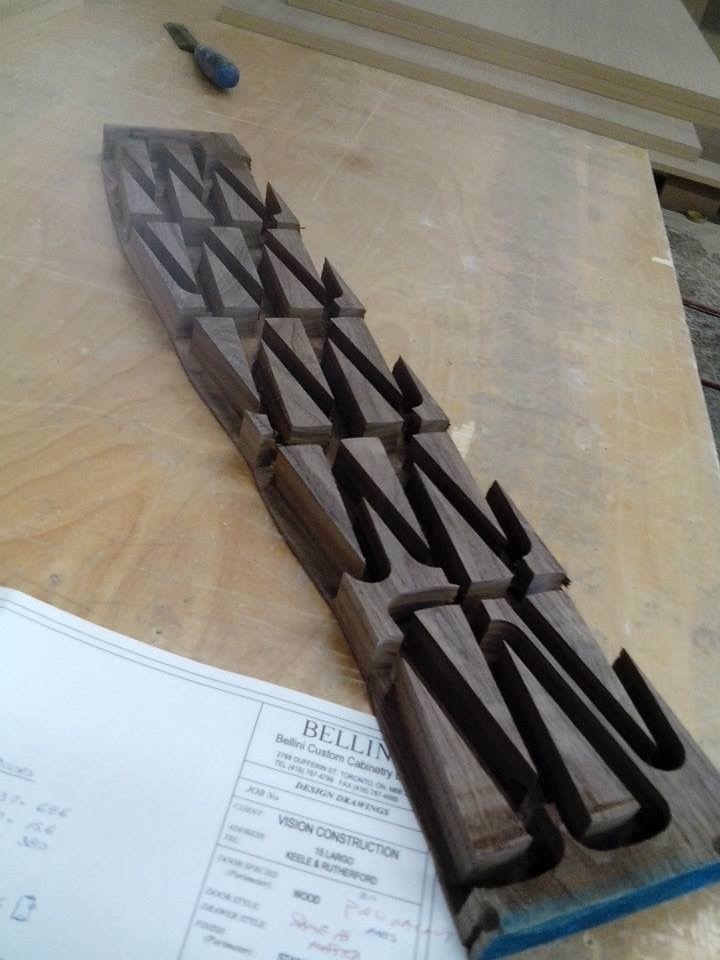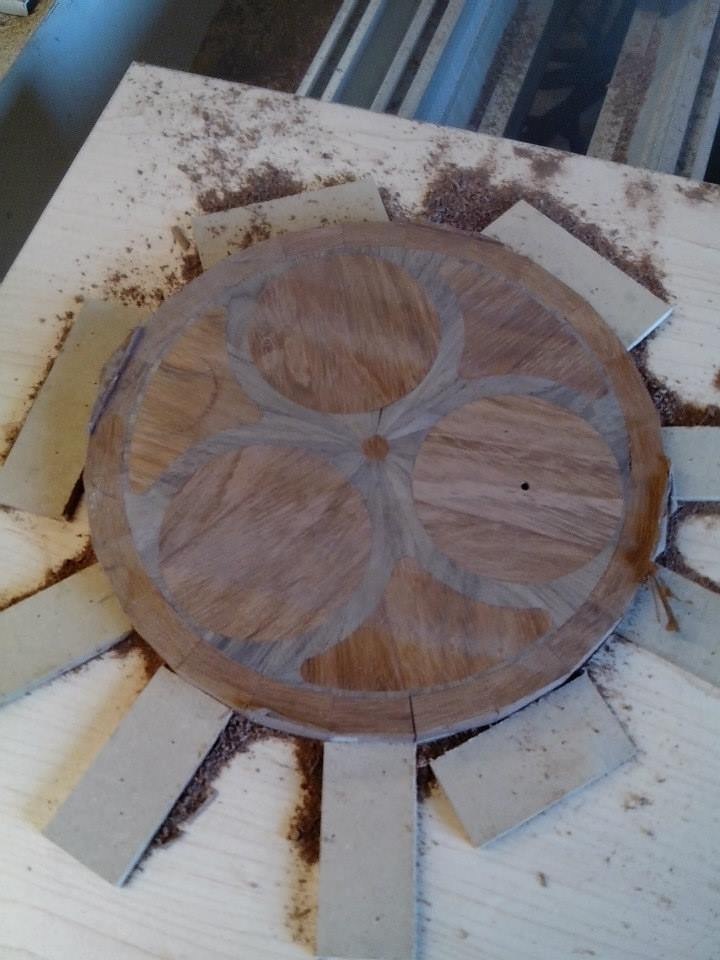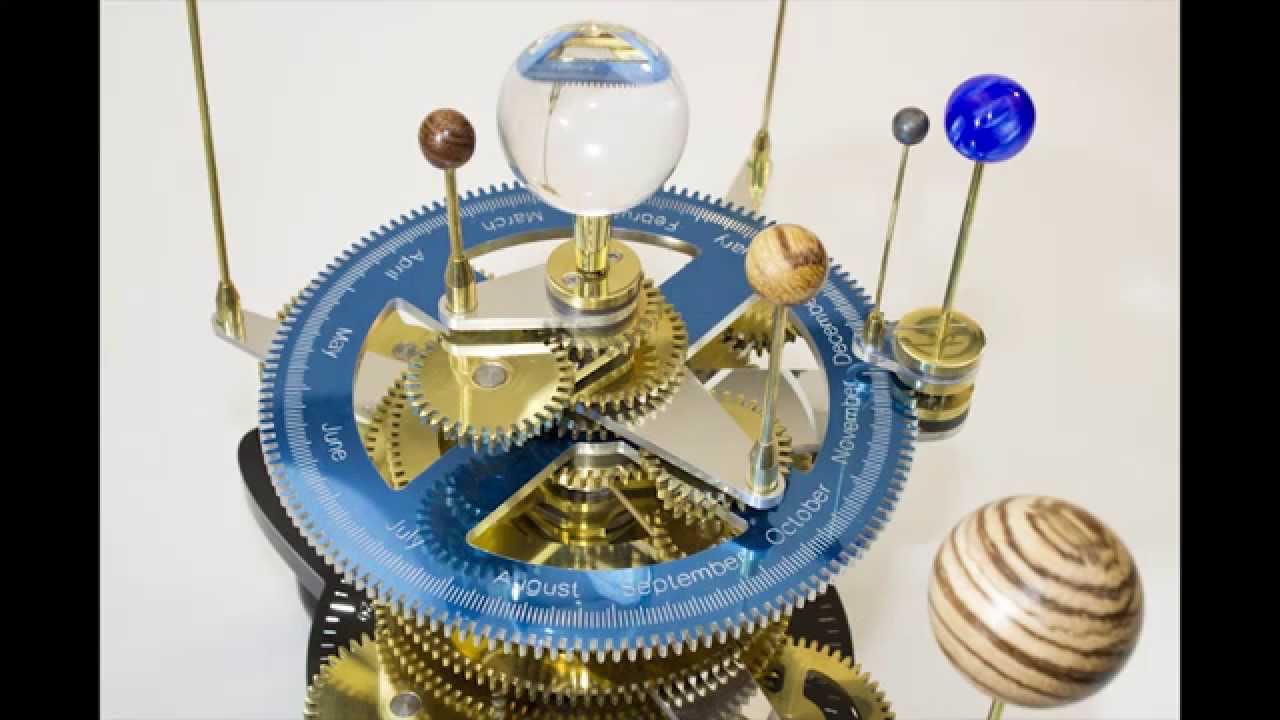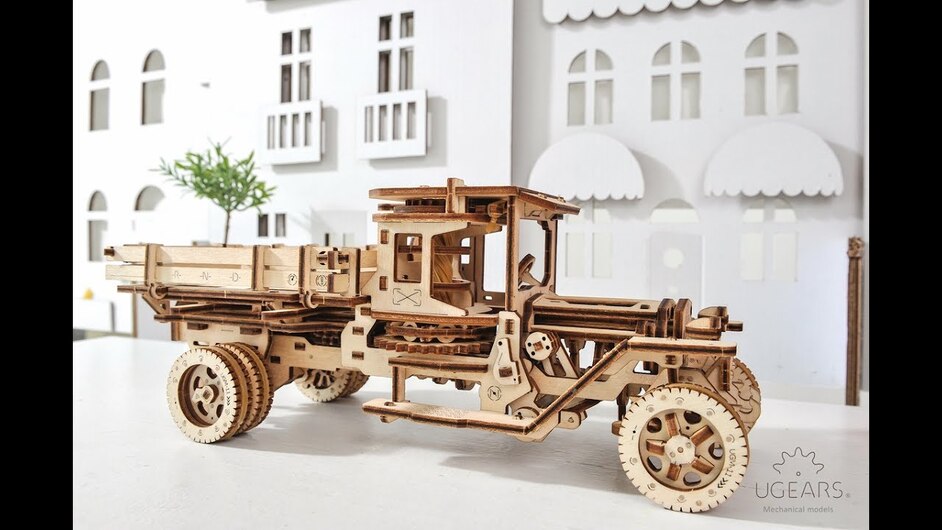Thanks, @frank_wolfers, the link you shared clearly confirms that it is in fact possible to create one of these amazing machines without resorting to metal gears! And @autumnleedavis, I was wondering about delrin after I posted my original question, had read that it is a bit tougher than acrylic. Not as nice looking when laser cut, but that isn’t quite as important for internal gears where the cut edges will be worn over time anyways as for full-on decorative bits.
Imagin to build it out of acylic and then illuminated it.
…then i have the laser i will never see daylight again…
Everyone seems to love the plywood and plastics. No one seem so excied for solid woods. Sorry to toot my own horn from a few days ago but I made this in solid walnut and jatoba :
The sort of things I would like to build are like the ones in this video - #13 by jordanloshinsky
I found the idea of using thin wedges to create the circle from some videos on YouTube( Ron Walters):
I took his technique to the cnc and basically achieved the same effect, but with way to many hold downs and jigs. It is one of the reasons I bought the GF.
If you go back to 1730 or so, John Harrison used the idea in his early clocks with wooden wheels, including the first sea clock made to meet the challenge to solve the longitude problem
Not to mention the amount of (premium) material lost in the router bit kerf - GF could cut this with ~20% less waste.
Indeed @dlaituri. Also I can a bit bit joinery between pieces to help with alignment
Only if you’re thinking this has got a lot fancy tools, an incredible amount of patience and puts it to use making museum grade artifacts. But you may also be thinking he’s missed three planets, or two, depending where you stand on the Pluto question and that he didn’t have the wit to make a clockwork mechanism to run it. 
Of course, you may be thinking something entirely different. 
I am definitely thinking something else!  The missing planets are probably missing for a couple of reasons;
The missing planets are probably missing for a couple of reasons;
- the orrery is a historical artifact, and this one includes all of the major bodies in the solar system that are visible from Earth without optical aid. The original ones were built before we invented telescopes, so they also ended at Saturn.
2 the base of the one here has a century of time inscribed, which is sufficient for over three full revolutions of Saturn, but including even just Neptune and Uranus would require a base covering a couple of centuries just to include a single orbit of Neptune, which has an orbital period of 165 years. Pluto takes it up another notch, with its 248 year orbit.
My guess is that the omission of an electrical drive was actually intentional, a nod to the historical nature of the project. I also feel that the interactive aspect introduced by the manual crank is a benefit rather than a liability.
That said, anyone who would prefer to use more modern knowledge and technology to make a more complete and/or powered model is certainly free to do so. I may even investigate what it would take to extend mine to include the other two major planets, but will not be including a motor, regardless of how many marbles are included. 
Indeed, I was being a little tongue-in-cheek. I had not considered driving it with an electrical motor but I do think a clockwork motor would not be out of keeping. …I marvel yet at the skill and patience needed to make it!
Ho. Lee. Crap.
Unreal. Wow. Just, wow.
Seriously. 
Crazy Kool
I’m pretty confident that acrylic gears will stand up well. Don’t forget Rowmark engraving acrylic which looks exactly like brass.




